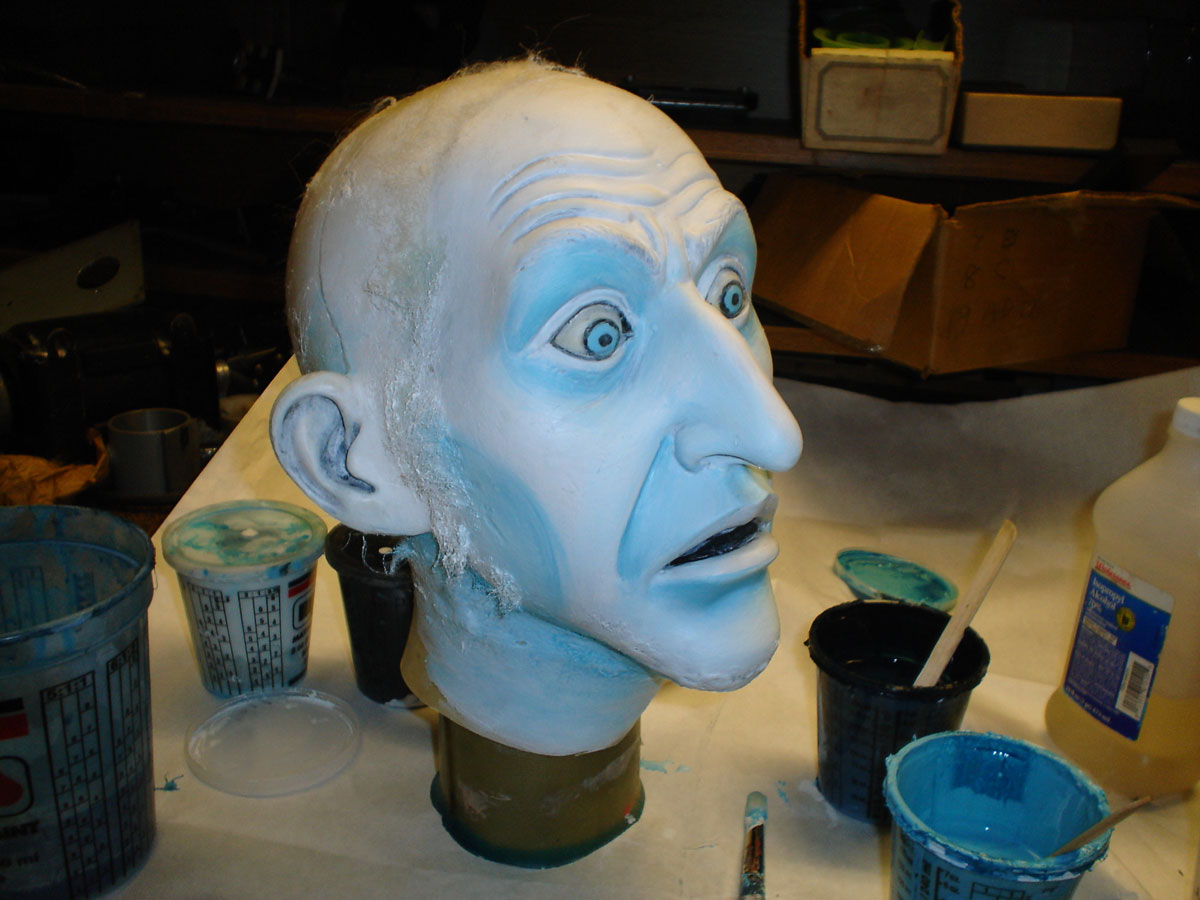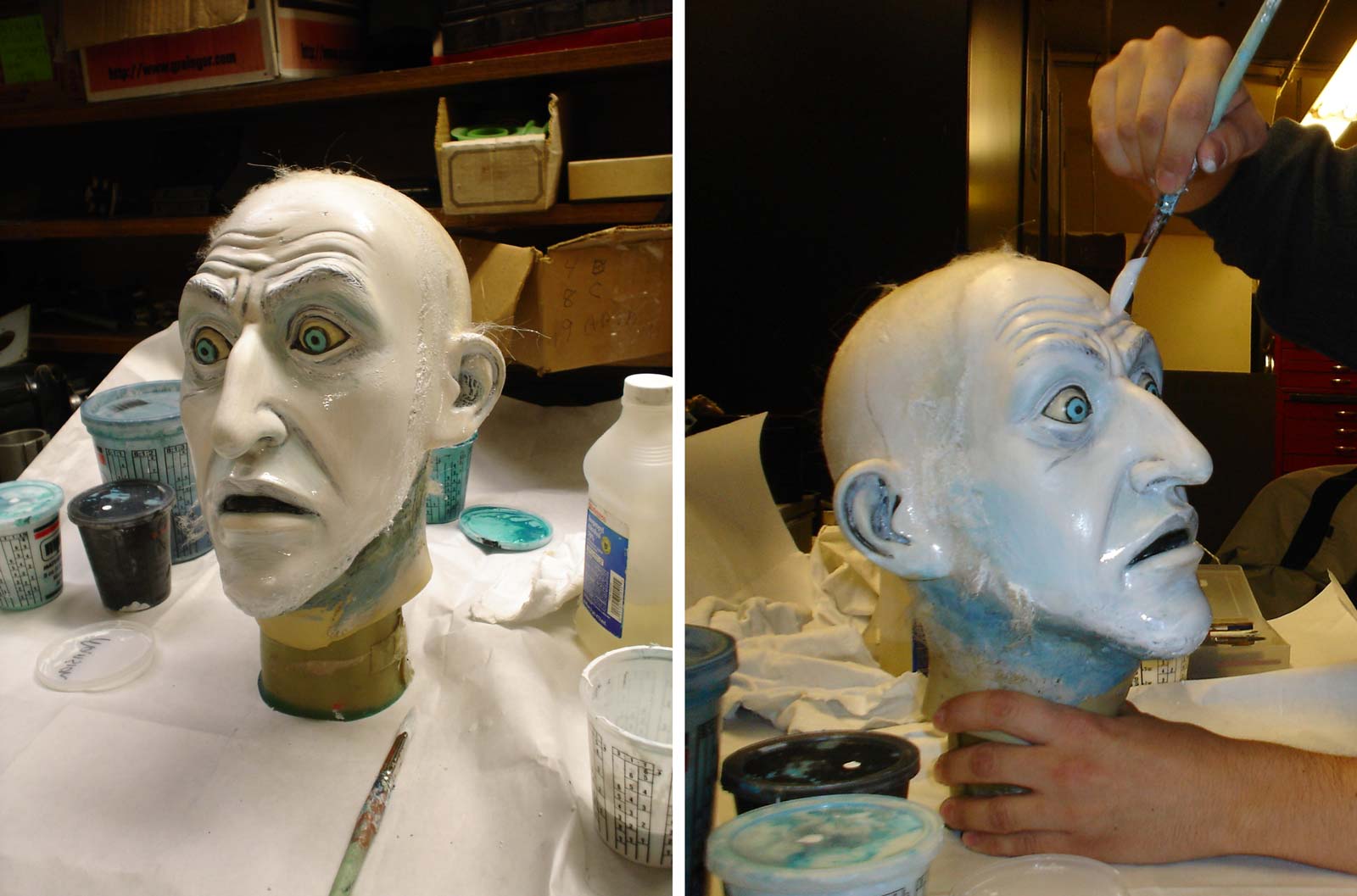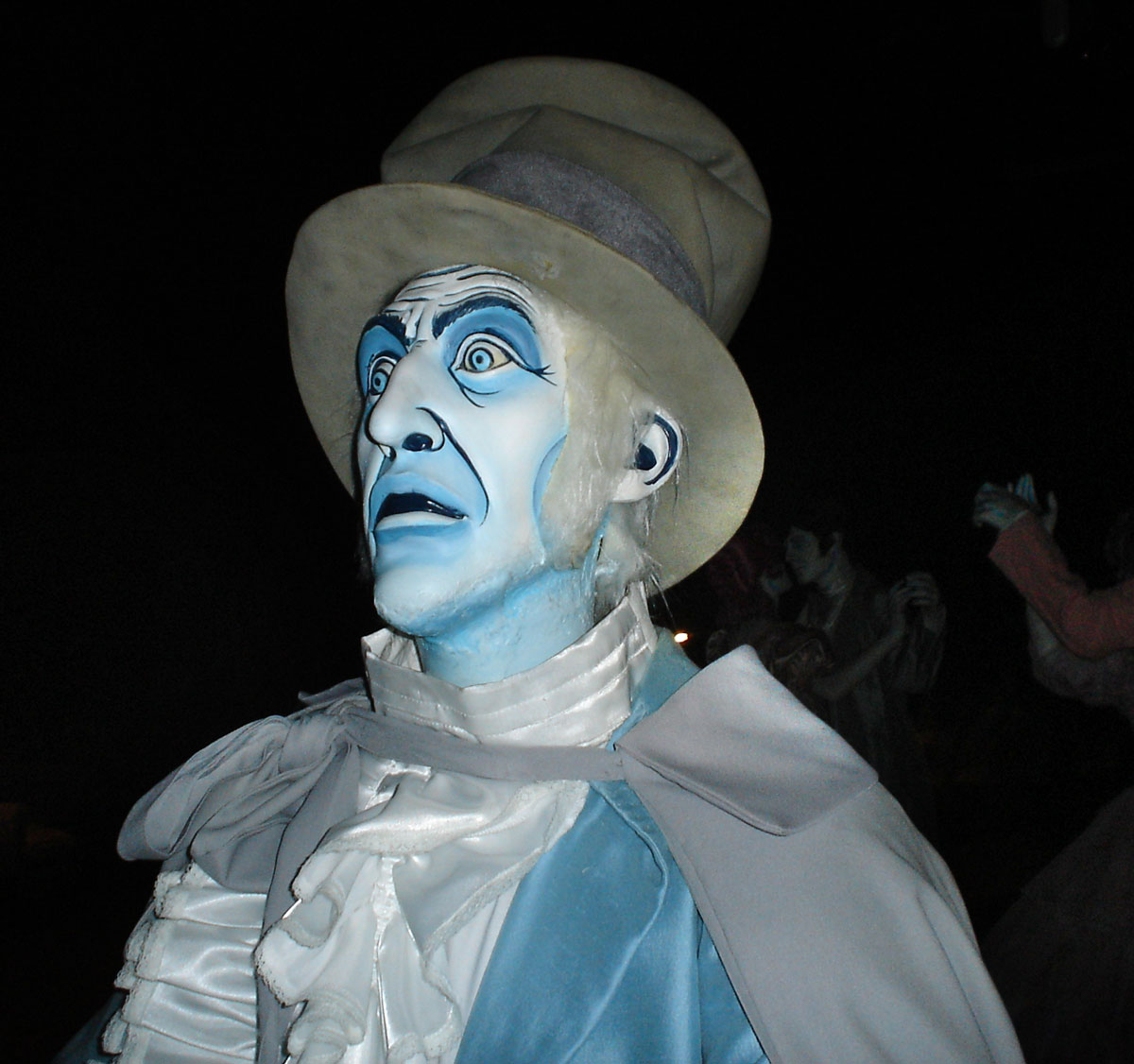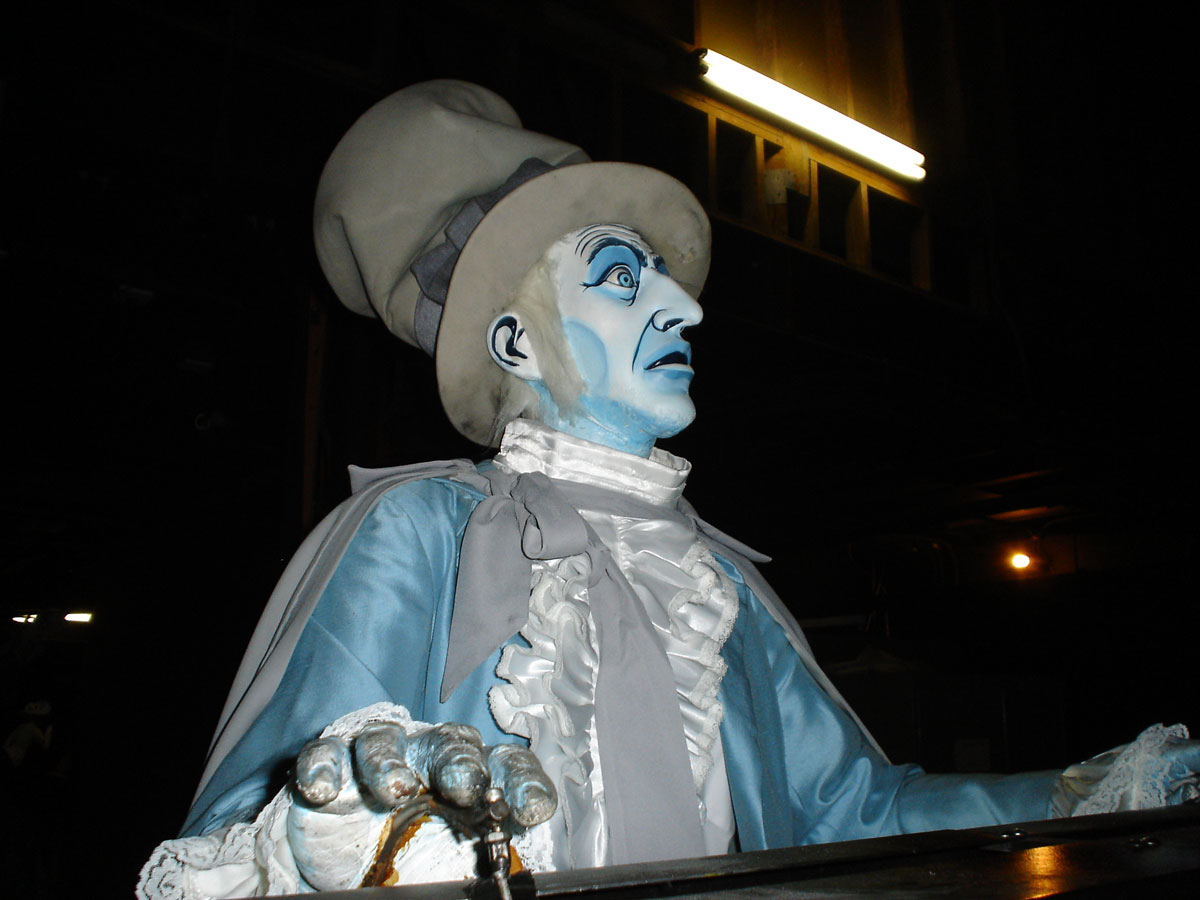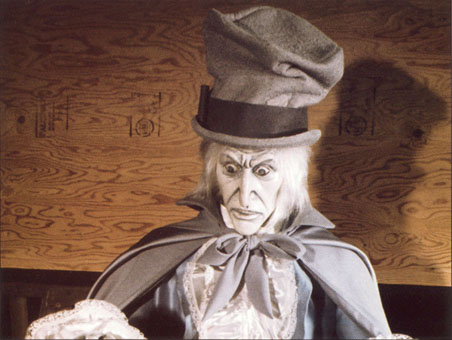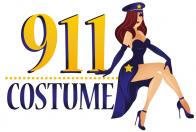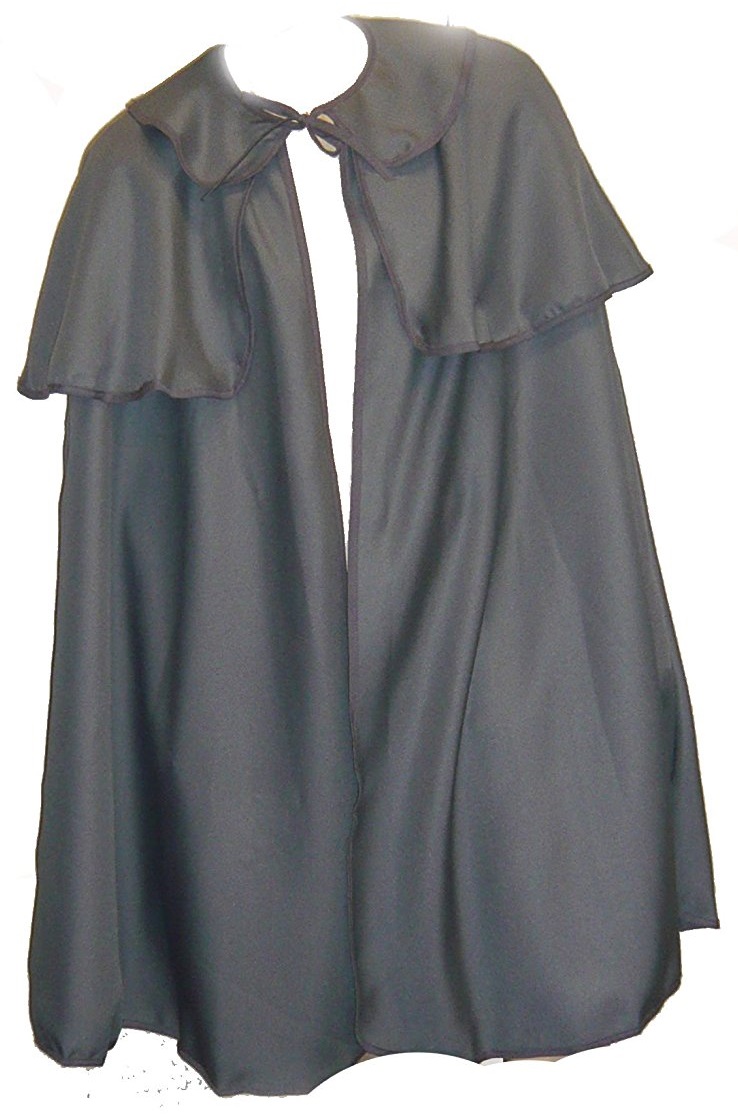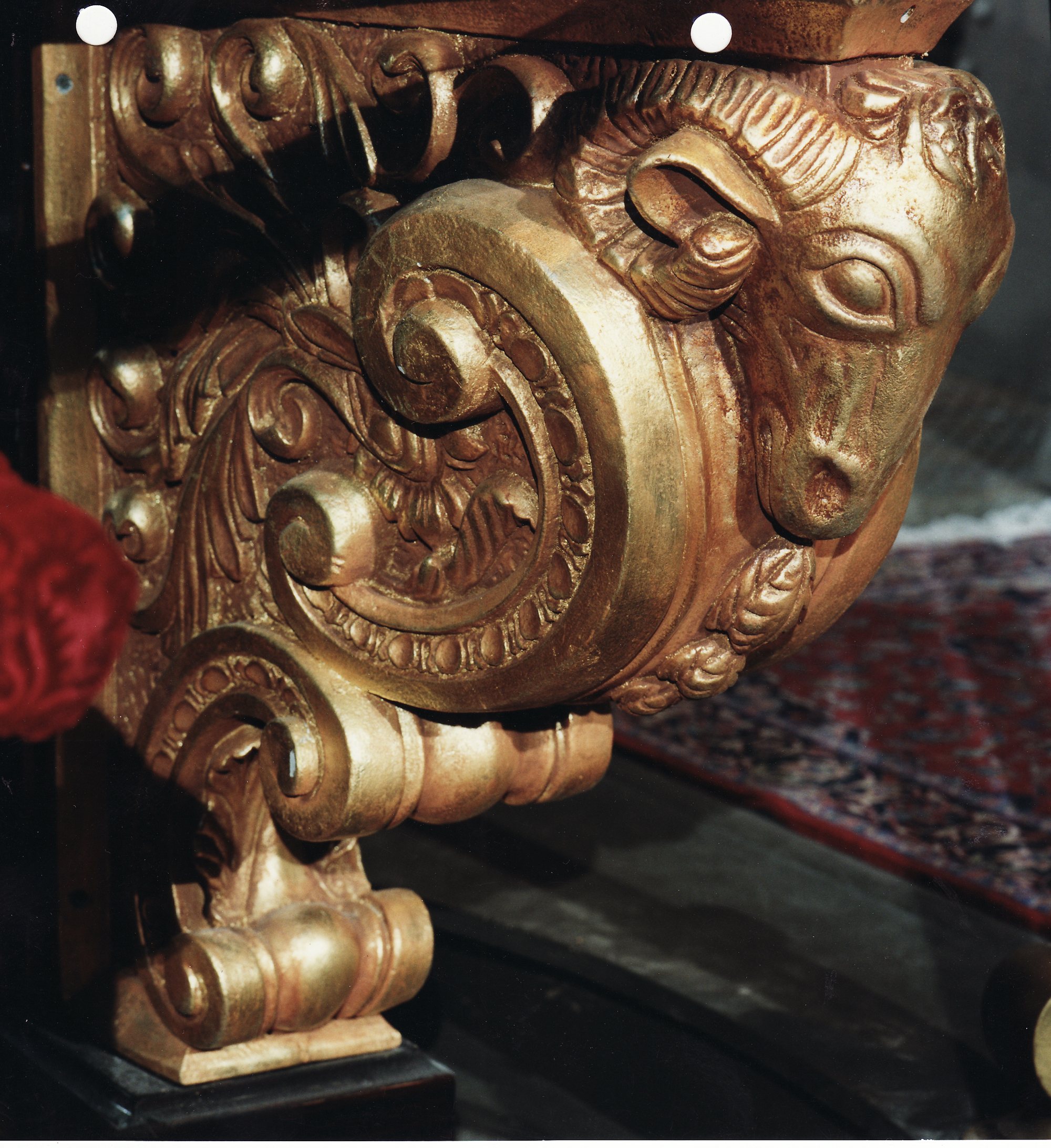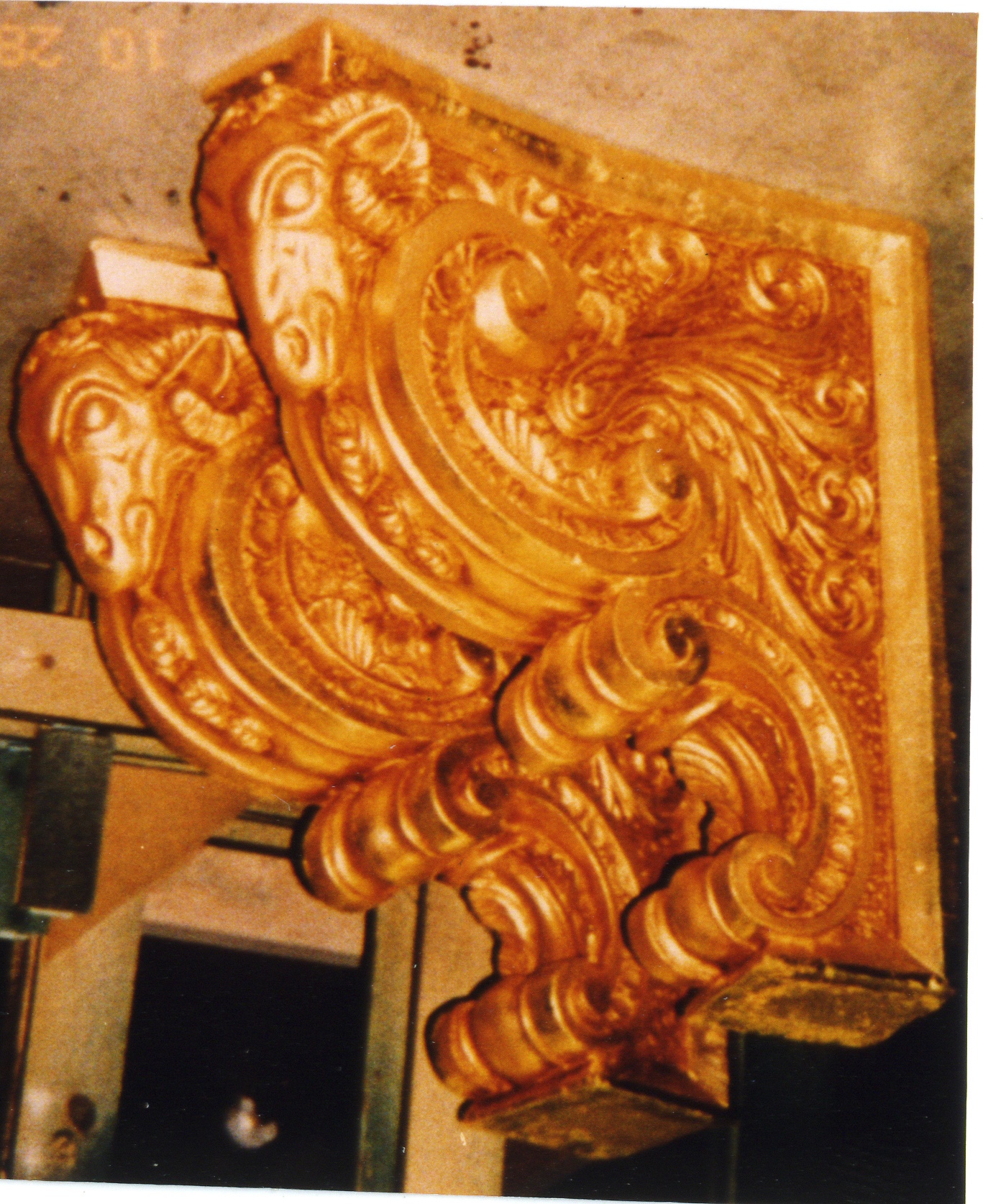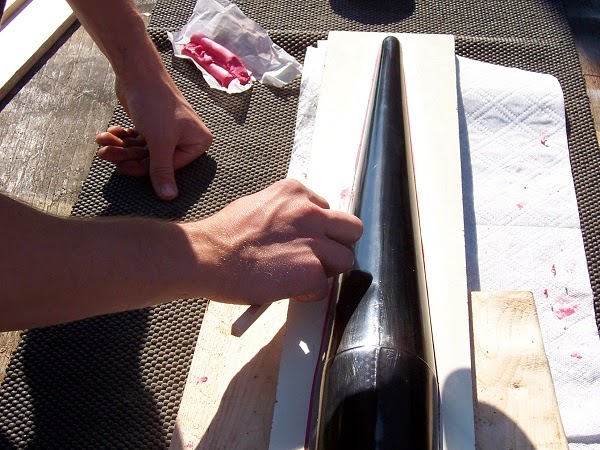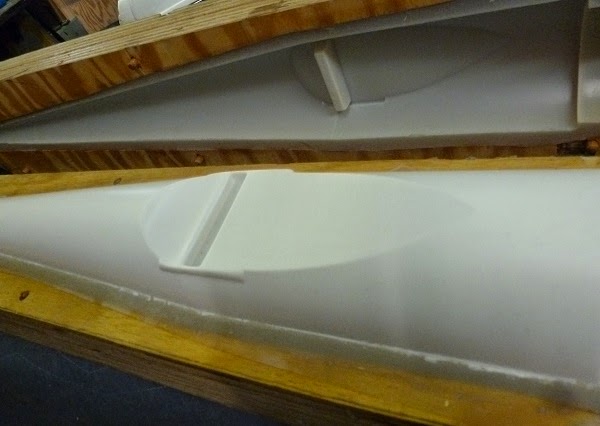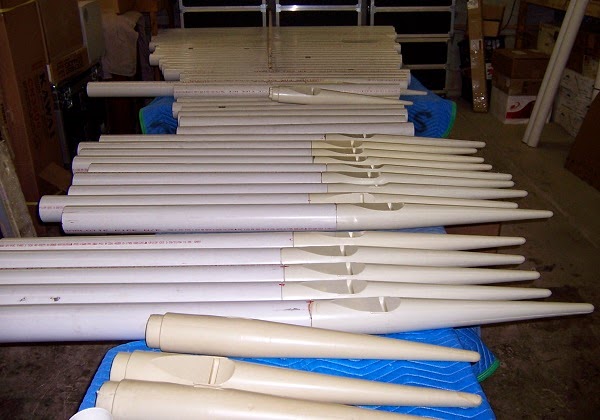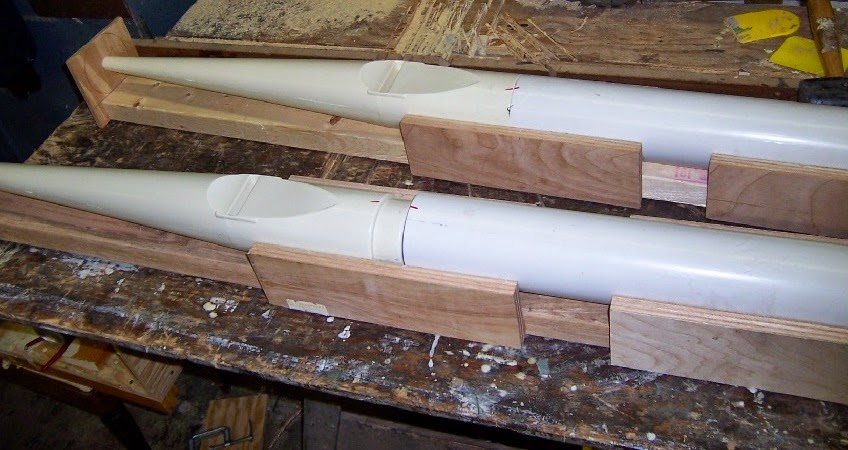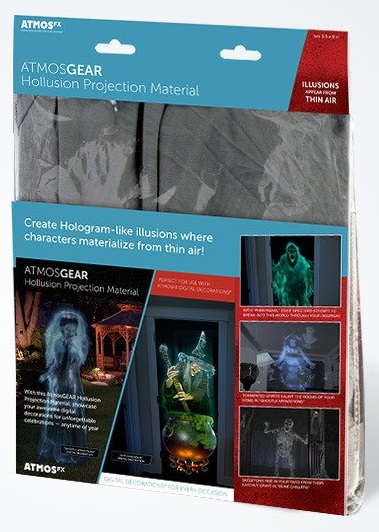Wicked Stone Home - Halloween Home - Drawing Board
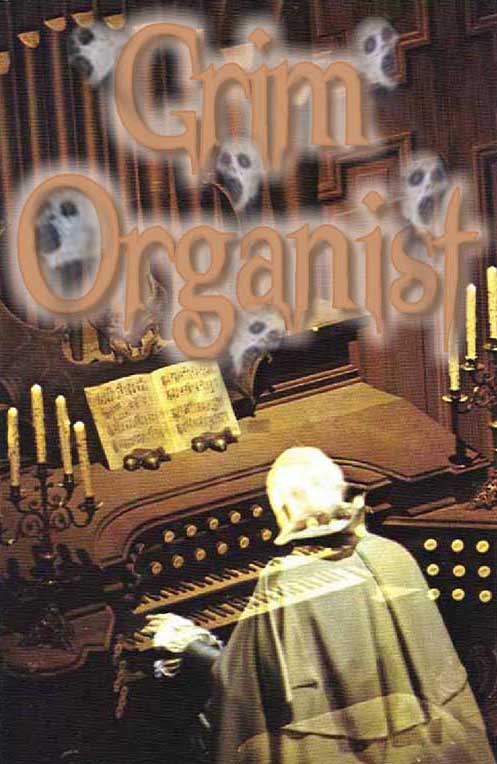
![]()
The origin of the Grim Organist can be traced back to Doug Ferguson and Phantasmechanics. Doug's experimental animatronic was then realized by Tom Marchak's Ghostly Grim Organist Baron Flesh Von Riptopen; Dan Oberley's Grim Organist; Brent Ross' Skeletal Organist; and Mike Fox's Nimble-Fingered Organist.
Walt Disney’s Haunted Mansion Organ and Organist
Ever since we first saw a Grim Organist, we've envisioned building a “replica” (well, at least a close approximation) of the pipe organ in Disney's Haunted Mansion. From the first three pictures, you can see that the Haunted Mansion organ was originally used in the making of 20,000 Leagues under the Sea and is sometimes referred to as Nemo's Organ.
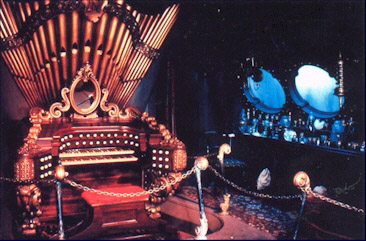
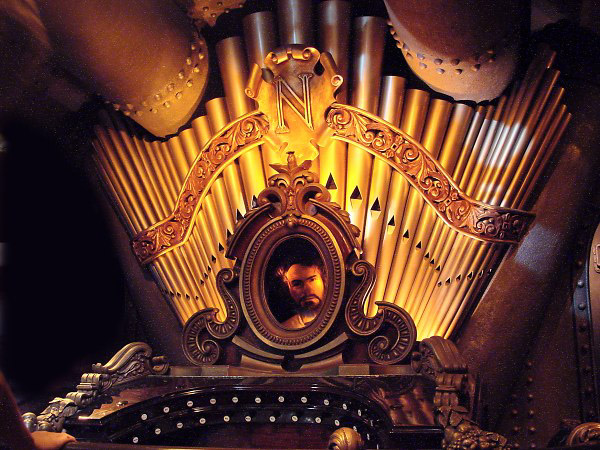
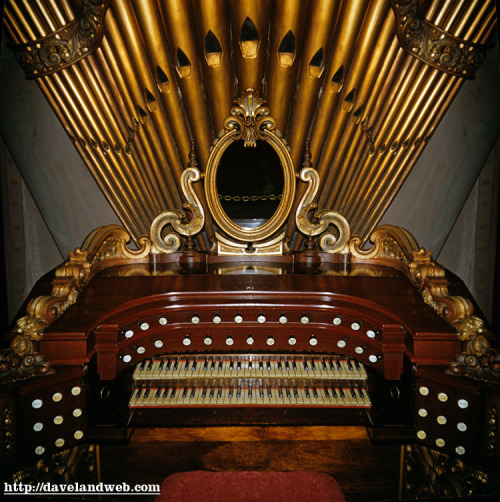
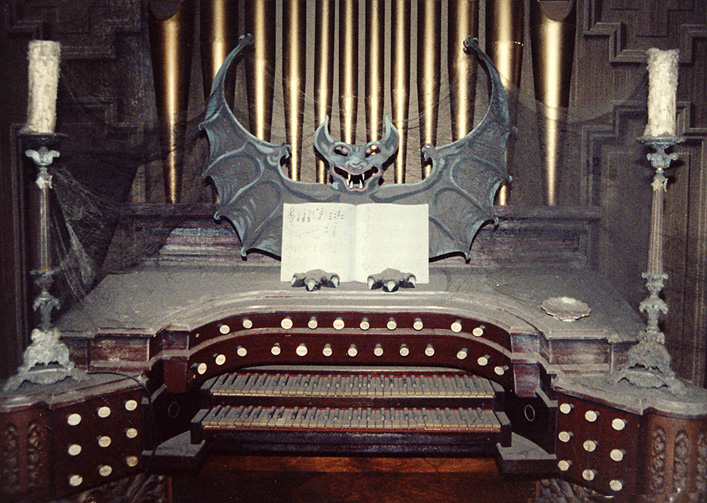
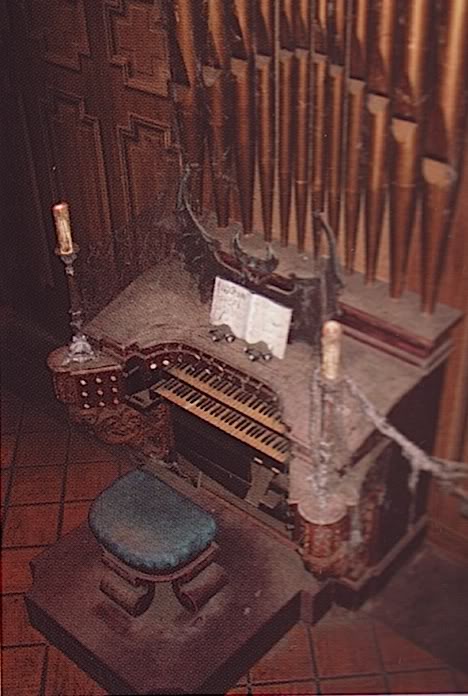
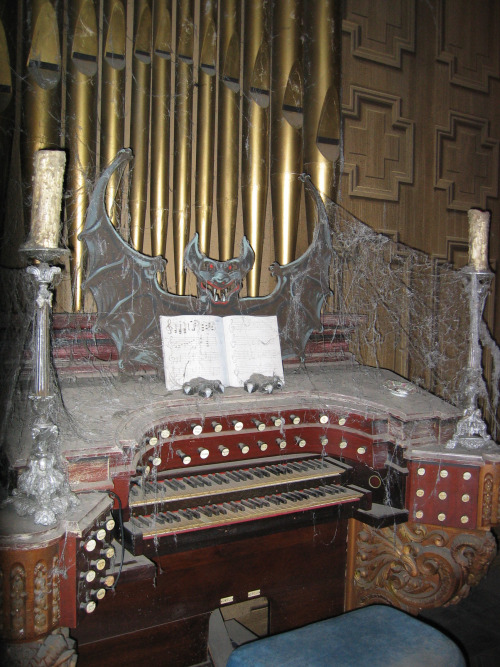
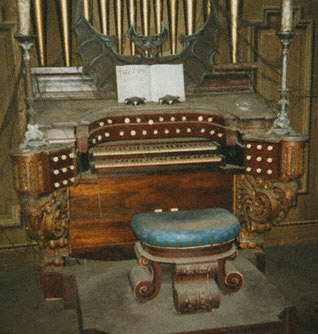
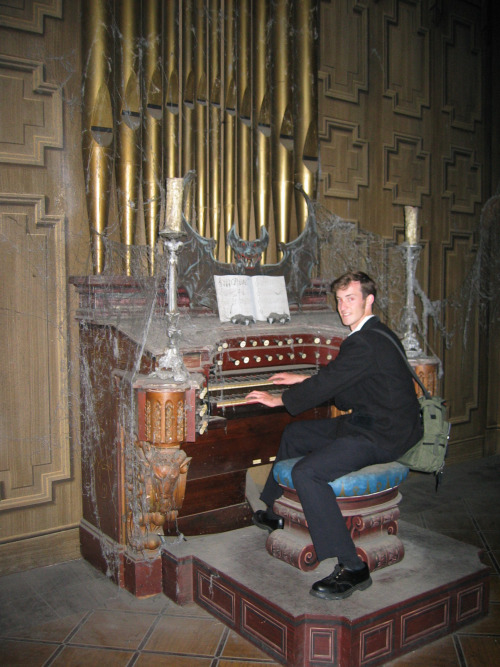
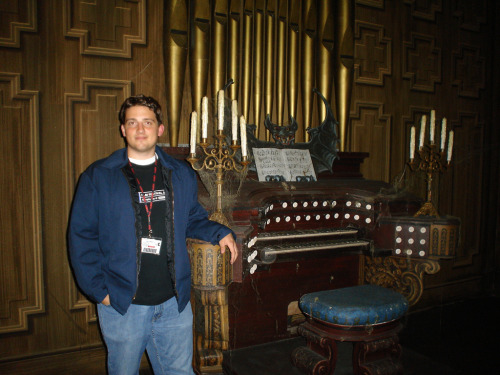
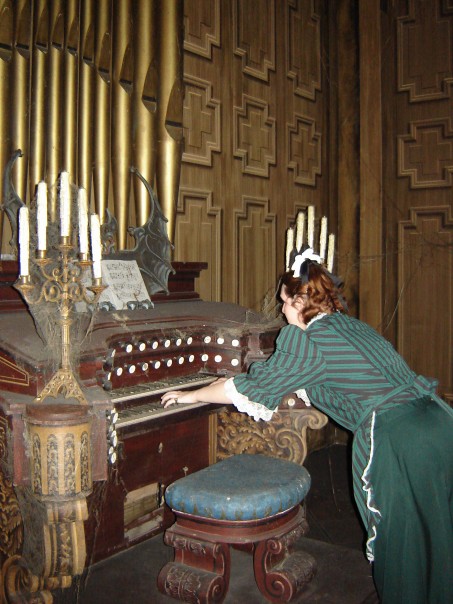
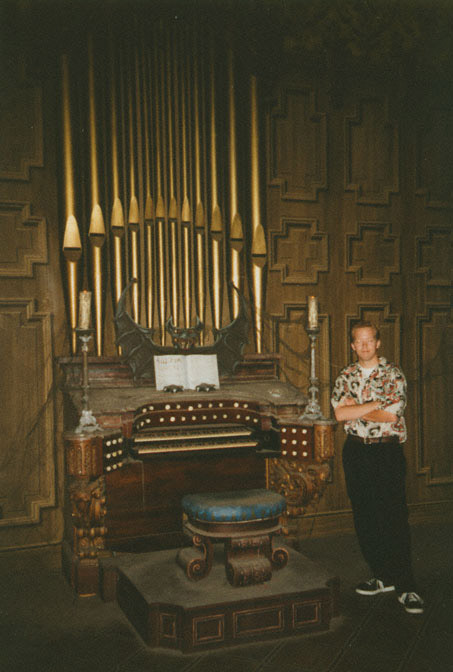
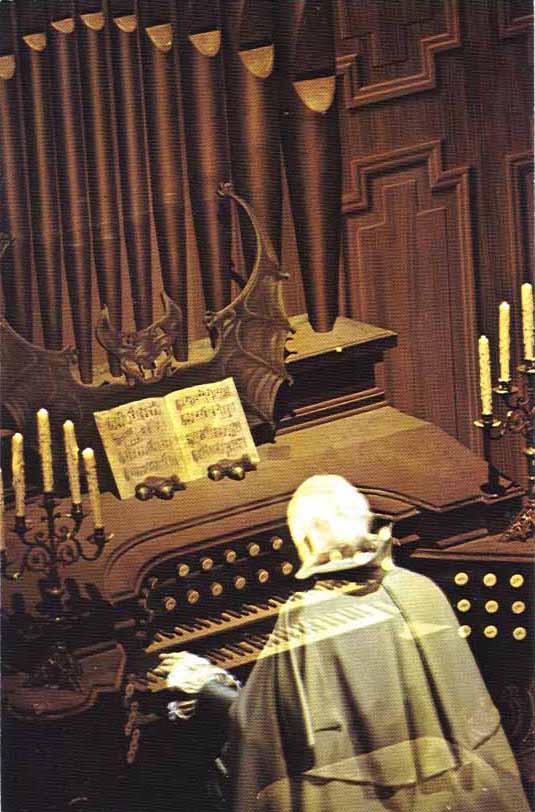
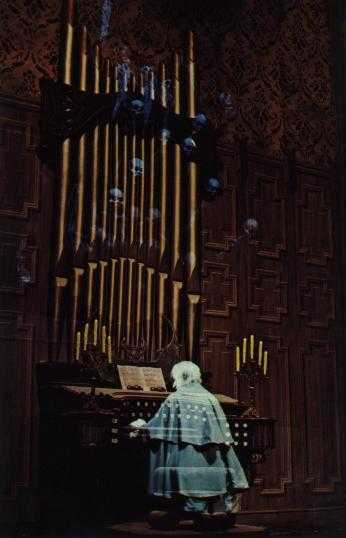
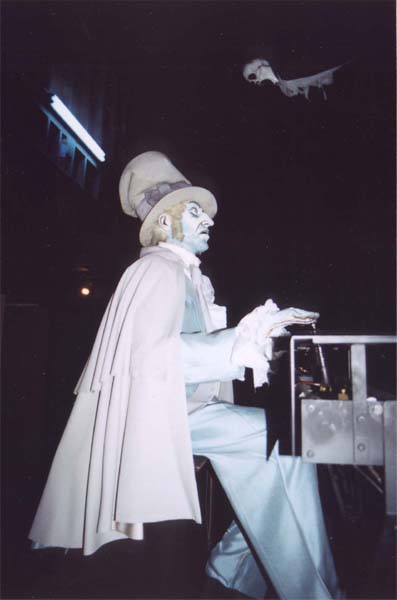
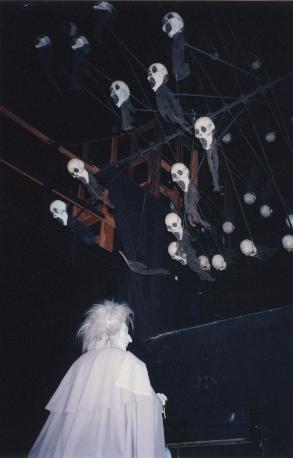
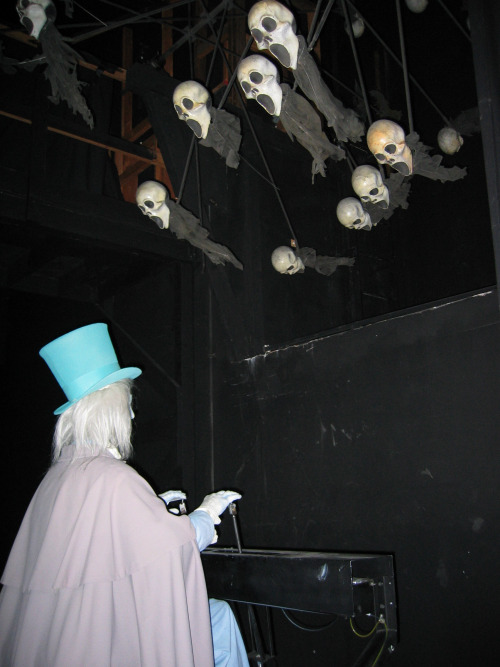
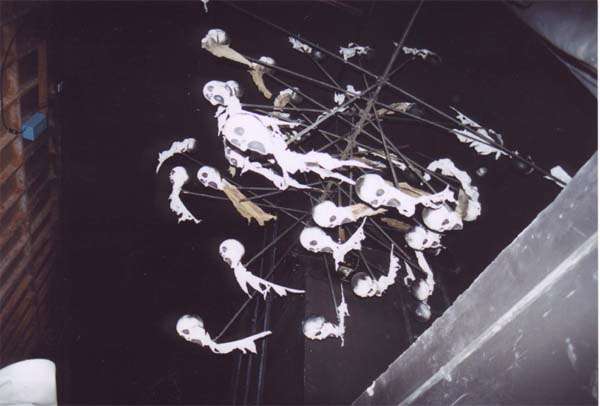
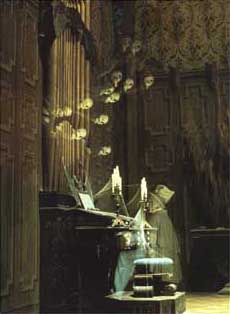
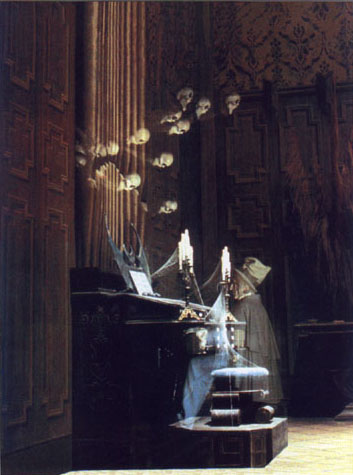
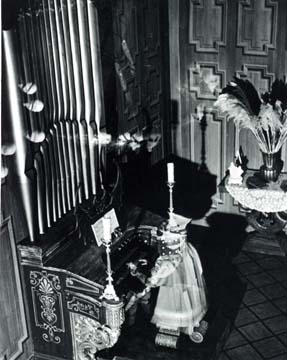
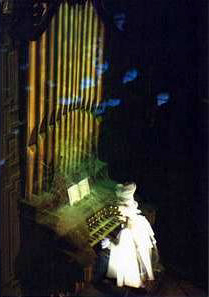
|
|
|
|
|
|
|
|
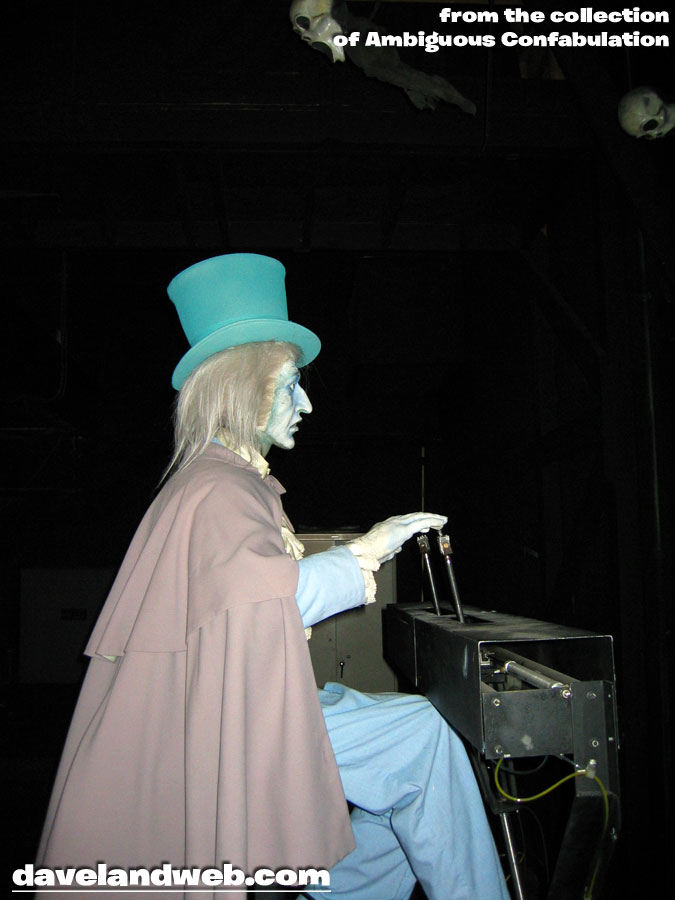
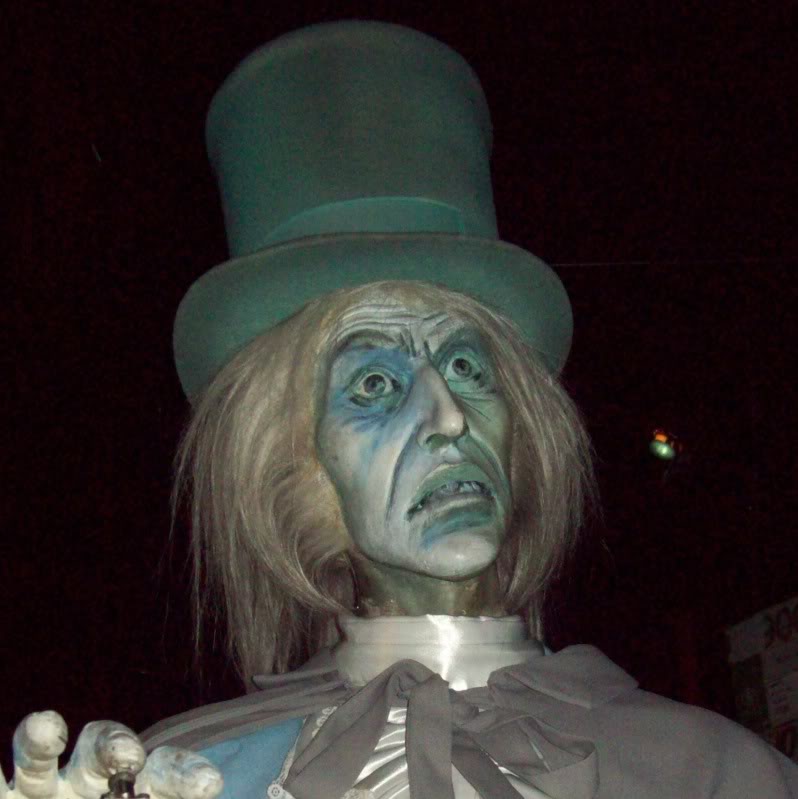
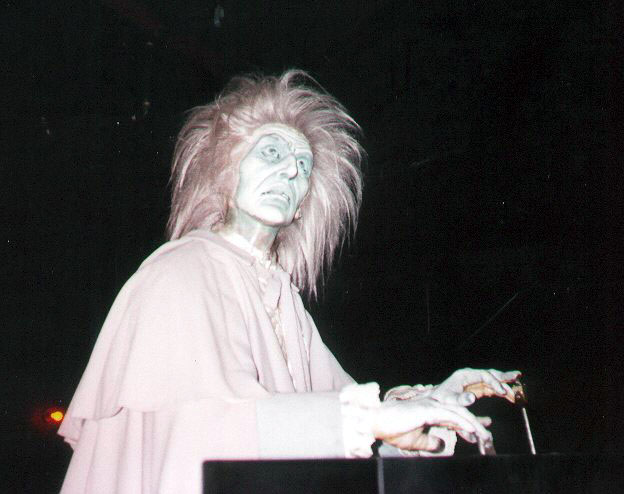

Wicked Stone’s Grim Organ and Organist
Organist
Mask
We commissioned Darren Perks of Dynamic Design International to make the organist mask. The mask was to be in the spirit of the Walt Disney Haunted Mansion organist mask, however, Darren was given artistic freedom to incorporate his own style. This is a picture of Darren's sculpt,
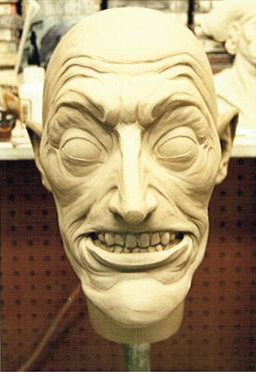
Organist Attire
The
organist will be decked out in a Dicken’s Victorian cape, tuxedo, goth shirt and
partially-crushed Reggie hat. The cape was
purchased (new on Amazon.com) from 911
Costume,
The
tuxedo and partially-crushed Reggie hat were purchased (used on eBay) as part
of the InCharacter Ghostly Gent Adult Halloween Costume,
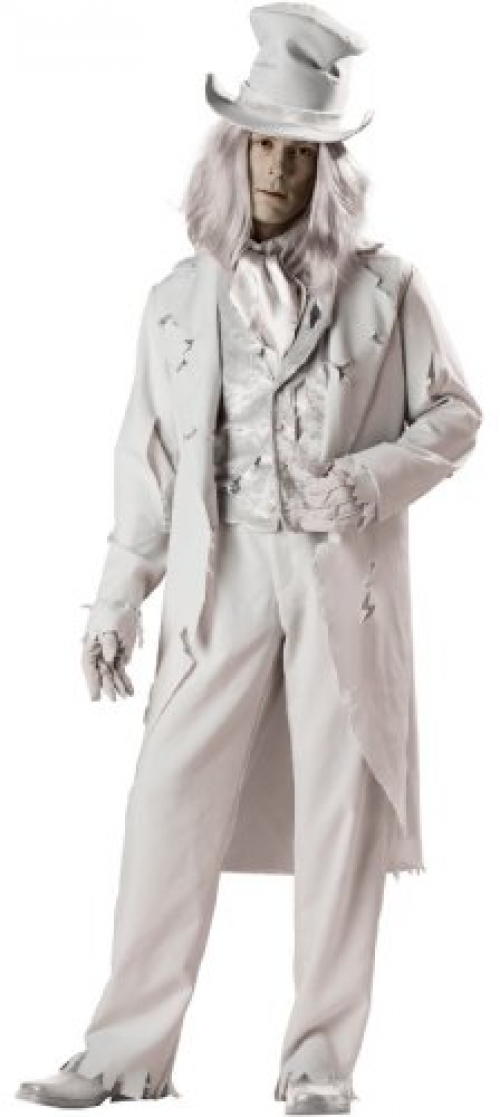
The
white goth shirt was purchased (new with tags on eBay) from NawtyFox,
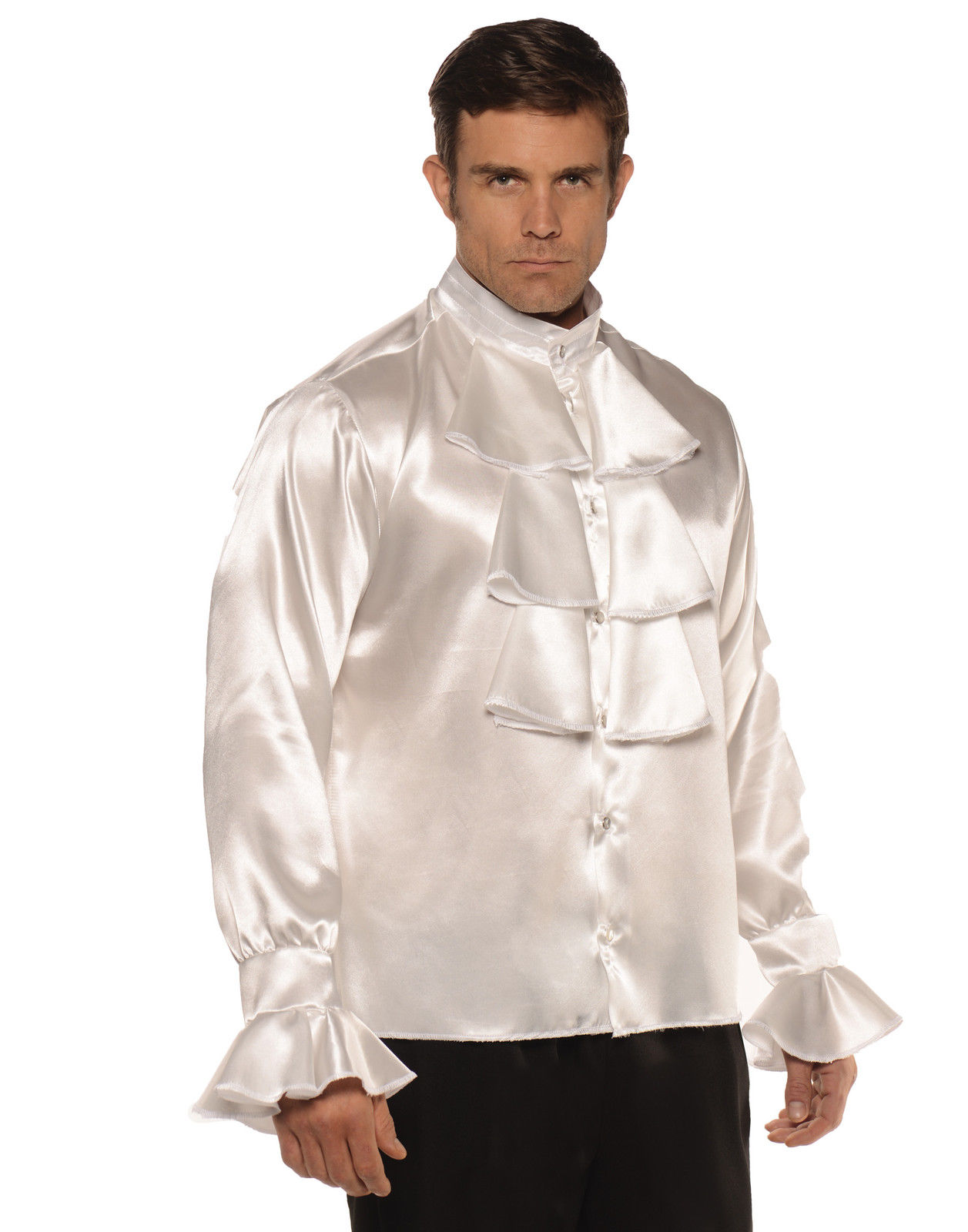
Organ
Disney's Haunted Mansion organ was reportedly based on a Robert Morton console similar to this one,
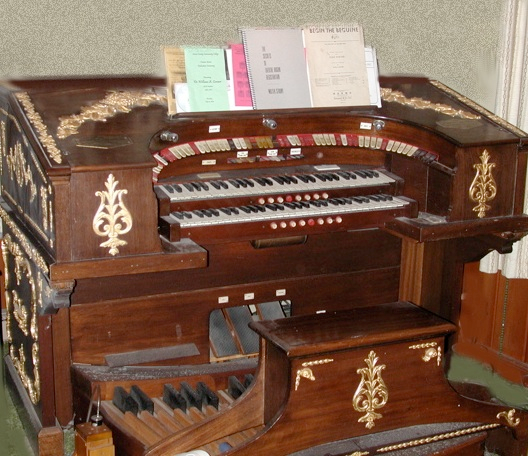
We learned our lesson after spending over five months and $2,000 building the Wicked Stone Computer-controlled Coffin. We weren't about to build the organ from scratch! This is our starting point,
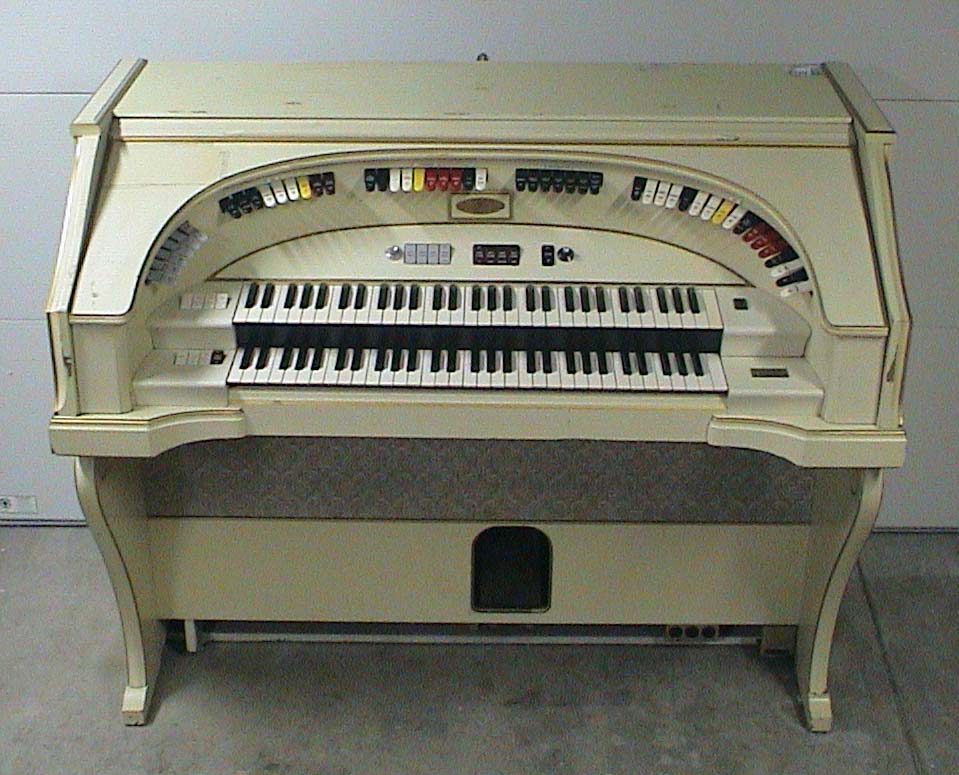
It’s
a Wurlitzer 4520. We found it in the parking lot of our local Colton Piano
& Organ. Who knows how long it had been there. We were told that if we
hauled it away that we could have it for free. The funny thing is that when we
got it home, it actually worked!
We have gutted the organ. The organ was filled with rather dated, bulky electronics. We removed all of the electronics in order to lighten up the organ. There are six speakers (including two sizable woofers) that are mounted behind the cloth under the keyboards. We plan to preserve the speakers. We have bought a pair of three-way crossovers from Radio Shack that we hope to use to re-wire the speakers.
We plan to strip the paint from the organ and stain the underlying wood.
The legs of the Haunted Mansion organ were actually made from a pair of corbels. This corbel was one of a matching pair made by JMK Sculpture specifically for Nemo's Organ that resides in France,
|
|
|
|
![]() – Please
let us know if you’re aware of affordable corbels similar in size and style to
the corbels used for the Haunted Mansion organ legs.
– Please
let us know if you’re aware of affordable corbels similar in size and style to
the corbels used for the Haunted Mansion organ legs.
Organ Pipes
We feel that the towering pipes are what make the Haunted Mansion organ so imposing,
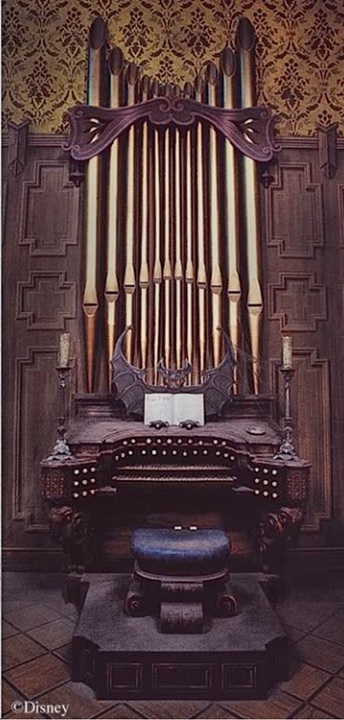
Here’s the anatomy of an organ pipe,
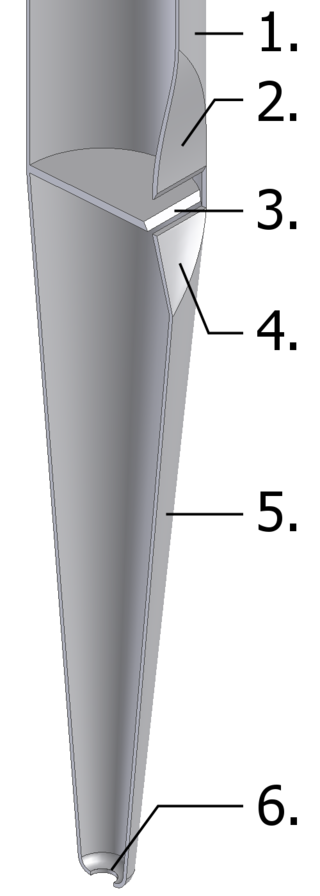
|
1. Pipe body or resonator |
|
2. Upper lip |
|
3. Languid |
|
4. Lower lip |
|
5. Foot |
|
6. Toe hole |
Here’s our drawing (approximately to scale) of the Haunted Mansion organ pipes,
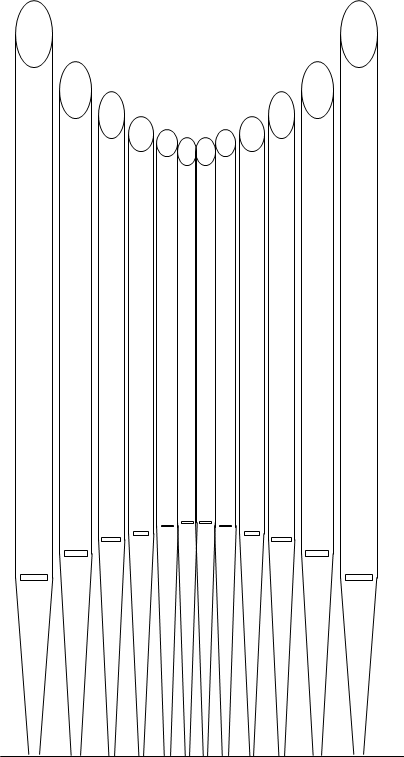
We are toying with the idea of building organ pipes out of varying diameters of PVC pipe. It's a little unclear as to how we will achieve the taper at the bottom of the pipes. Grafton Piano & Organ made a mold from a real organ pipe,
|
|
|
|
|
|
|
|
These photographs
are from Grafton Piano & Organ.
This is an excellent technique, however, you must first secure real organ pipes from which to make the mold. Ideally, we’d like two organ pipes in each of six different diameters. It’s hard to justify the time and cost of making six molds to only pull two casts of each mold.
![]() – Please
let us know if you’re aware of design plans for making faux organ pipes like
the Haunted Mansion organ pipes (pictured above).
– Please
let us know if you’re aware of design plans for making faux organ pipes like
the Haunted Mansion organ pipes (pictured above).
Wind Chest
The pipes will sit in a “wind chest” mounted on top of the organ.
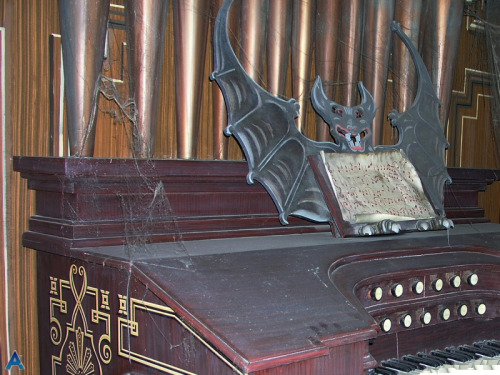
Here’s the profile of the wind chest,

Draw Knobs
We have removed all of the brightly colored knobs, levers and switches from the face of the organ. We will replace the levers with ivory draw knobs. This will relieve the organ of its "high-tech" look. Here is a picture of the draw knobs we will use,
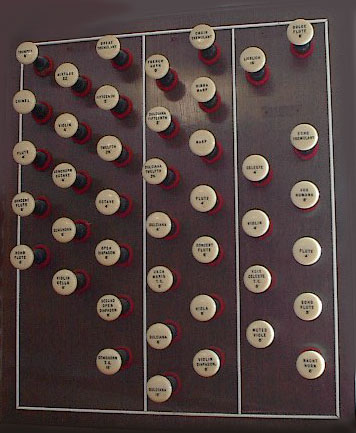
This picture depicts the relative position of the draw knobs,

We plan to build out the front of the organ, including the "boxes" to the left and the right of the keyboards.



Bat
Sheet Music Holder
We plan to build a bat sheet music holder as depicted in this blueprint and picture,
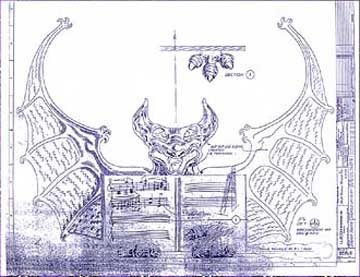
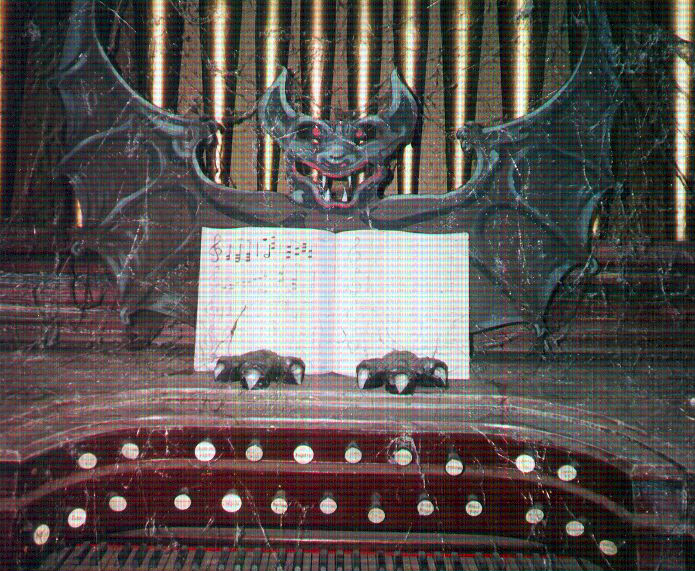
Here is the initial draft of our bat sheet music holder pattern,
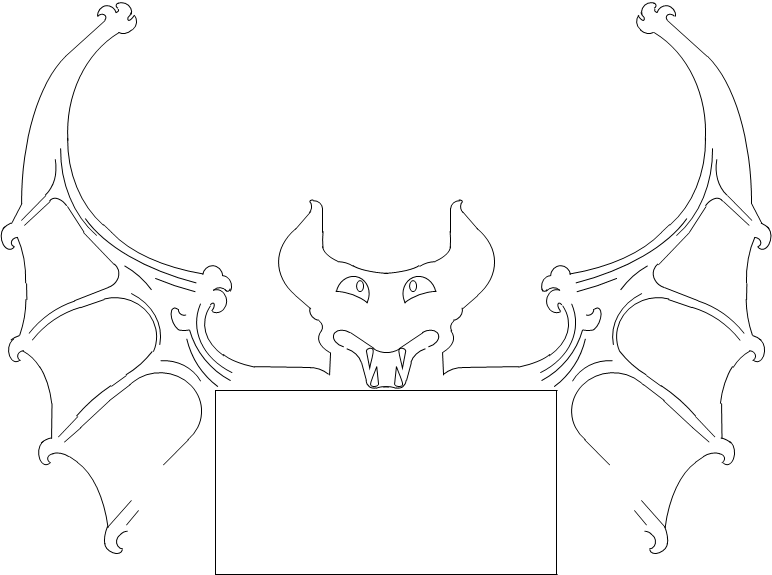
Here are pictures of the clawed feet which hold the sheet music,
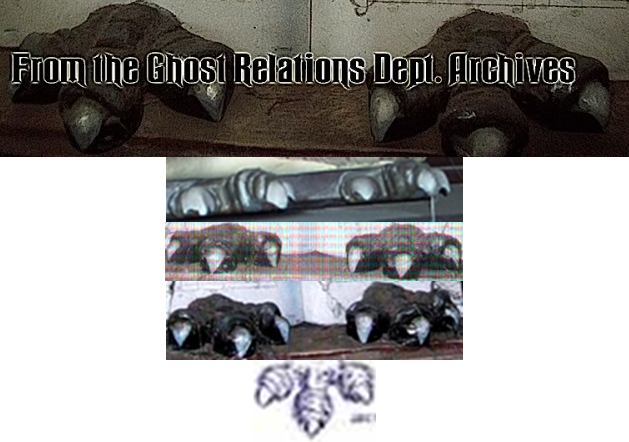
Organ Bench
Disney’s Haunted
Mansion organ bench is very ornate. We
certainly don’t expect to incorporate this level of detail in our bench, at
least not in the initial conjuring.
![]() – Please
let us know if you’re aware of an affordable bench similar in style to the
Haunted Mansion organ bench.
– Please
let us know if you’re aware of an affordable bench similar in style to the
Haunted Mansion organ bench.
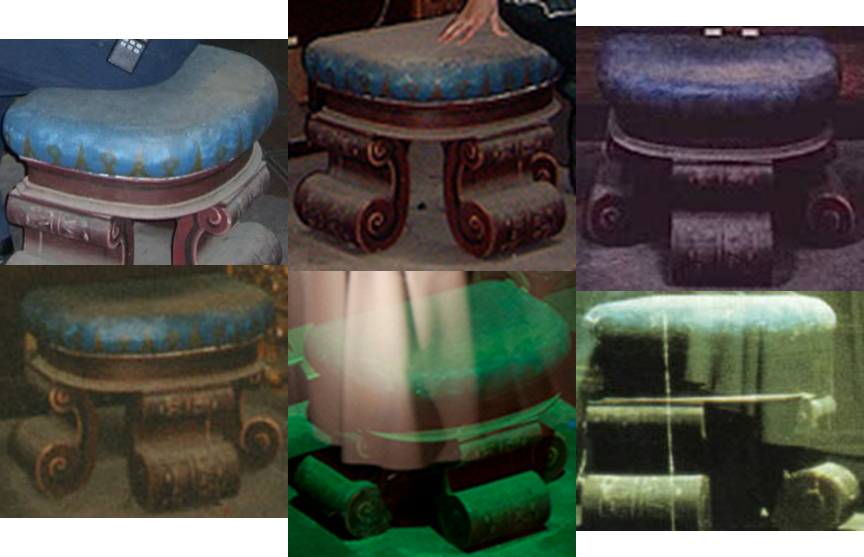
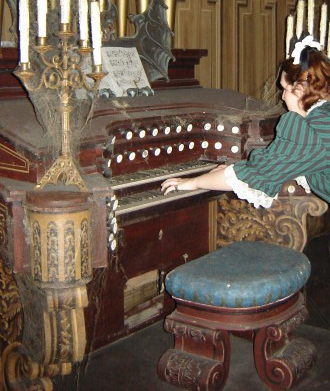
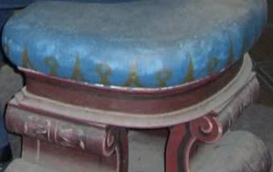
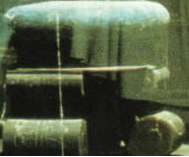
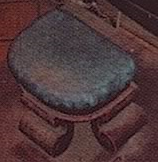
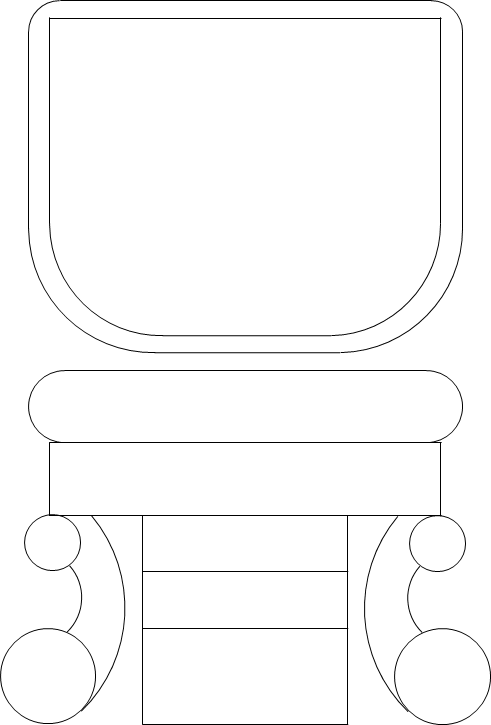
Animation
We considered three different approaches to
animating the Wicked Stone Grim Organ and Organist,
· Pneumatics with Pepper’s Ghost Illusion
· Pneumatics in Direct View
· “Hologram” Projection
Pneumatics
with Pepper’s Ghost Illusion
Of course, our first consideration was the Pepper’s
ghost illusion used in Disney's haunted mansion ballroom,
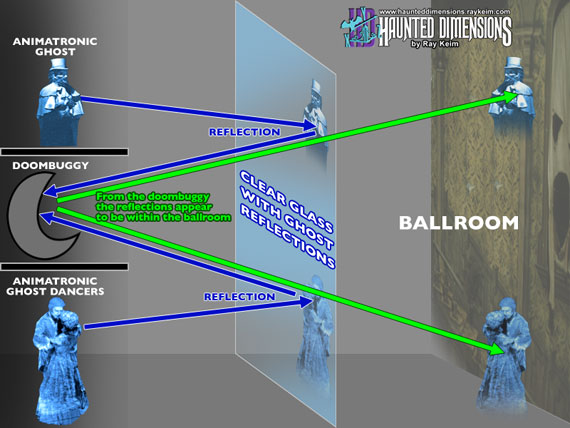
This illustration is from Haunted Dimensions.
The organist is animated out of sight of the
audience. The audience views the
reflection of the animated organist through a large piece of glass.
We will need a body form for the organist. In 2003, we purchased a thick latex-skinned,
dense foam-filled male body form from Michael Burnett Productions at
the TransWorld’s Halloween & Attractions Show
in Chicago for the Wicked Stone Thrash ‘n Burn,
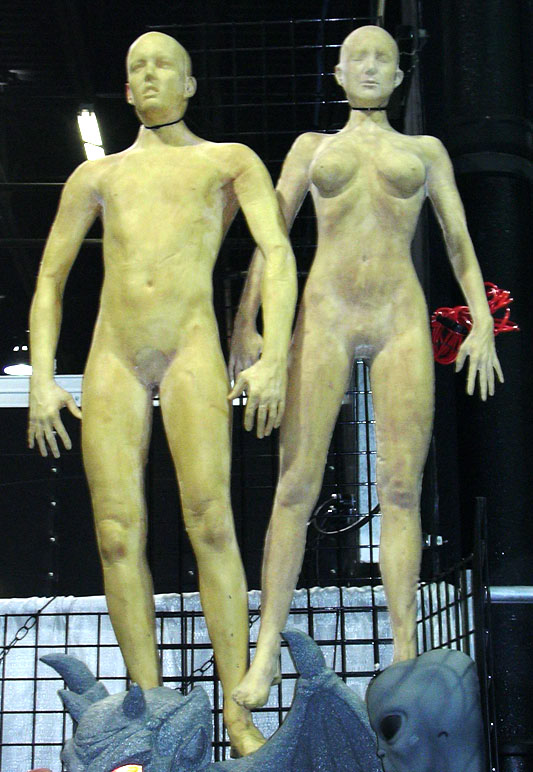
We would animate the organist using
pneumatics. A cylinder would be
used to lift and lower each hand. These cylinders would attach at the wrist.
This is a picture of one of the cylinders,
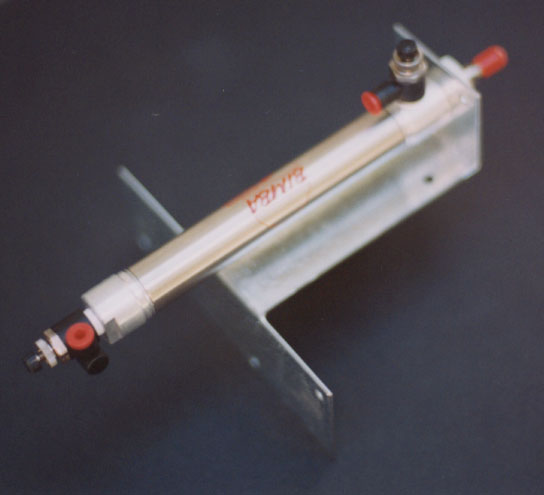
This
picture shows how the cylinder would be oriented along the face of the
keyboard,
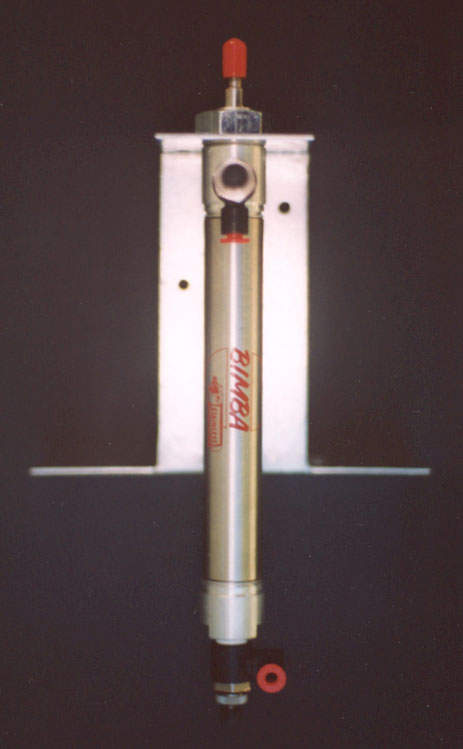
A
rodless cylinder would be used to move each hand left
and right. The two rodless cylinders would mount
flush under the keyboard. This is a top view of one of the rodless
cylinders as it would be mounted under the keyboard. The rodless
cylinder is approximately 1/2" thick,
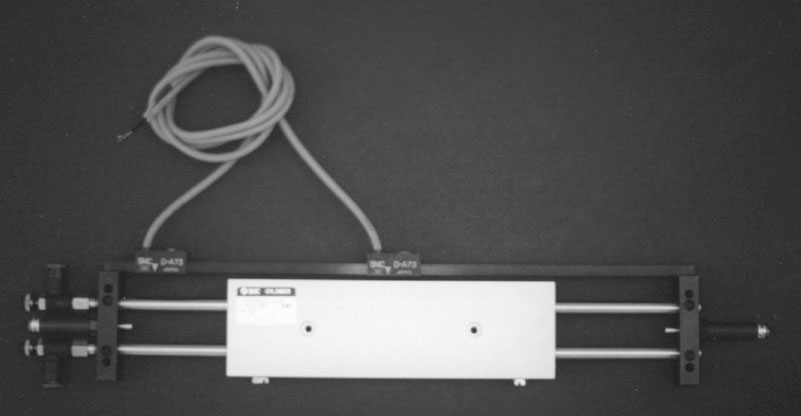
A
cylinder would be connected between the organist's spine and his crotch in order
to lean the organist forward. One cylinder would nod the head and a rotary
cylinder would rotate the head.
We’d use a combination of five-port, three-position and five-port, two-position solenoid valves. The five-port, three position solenoid valves would be used in conjunction with those cylinders over which we hope to have digital control. Of primary importance are the cylinders that would move the hands left and right and the rotary cylinder that would rotate the head.
Small
solenoid valves and air cylinders would be used to animate several organ keys
corresponding to each hand.
Pro’s:
· Tip of the (Reggie) Hat – The use of Pepper’s
ghost illusion pays homage to Disney's haunted organist.
· Ghostly – The reflection of the animated
organist in the glass creates a ghostly image.
Controlling the lighting between the main viewing room and mirror-image
room will make the organist gradually appear and disappear.
Con’s:
· Cost – At a minimum, we’d need a 5’ 8” x 8’
piece of glass (or Plexiglass) with a main viewing room of only 4’ x 4’ x 8’. You have the cost of a body form and the cost
of pneumatics to animate the organ and organist.
· Handling / Storage – Handling and storing
such a large piece of glass will be a nightmare. Plexiglass would alleviate this concern
slightly.
· Complexity – Achieving lifelike movement
using pneumatics is extremely challenging and requires ongoing maintenance.
Pneumatics
in Direct View
Our second consideration was the use of “Pneumatics
in Direct View”. In other words, the
organist would be animated using pneumatics in direct view of the audience.
Pro’s:
· Less Expensive; Easier Handling / Storage - Eliminates
the cost and handling / storage headache of using glass or Plexiglass. However, you still have the cost of a body
form and the cost of pneumatics to animate the organ and organist.
Con’s:
· Ghost Busted – The ghostly nature of Disney's
organist will be lost.
· Complexity – You still have the challenge of
achieving lifelike movement using pneumatics.
“Hologram” Projection
We’re leaning
towards the use of a “Hologram” projection.
By definition, a hologram is a three-dimensional image. Stage illusions such as Pepper's ghost are often
mistakenly referred to as holograms. AtmosFX appropriately
uses the term “hologram-illusion” or “Hollusion” to
refer to such images.
We will
videotape an actor in the organist costume.
The actor will be videoed sitting on a black bench in front of a black
backdrop,
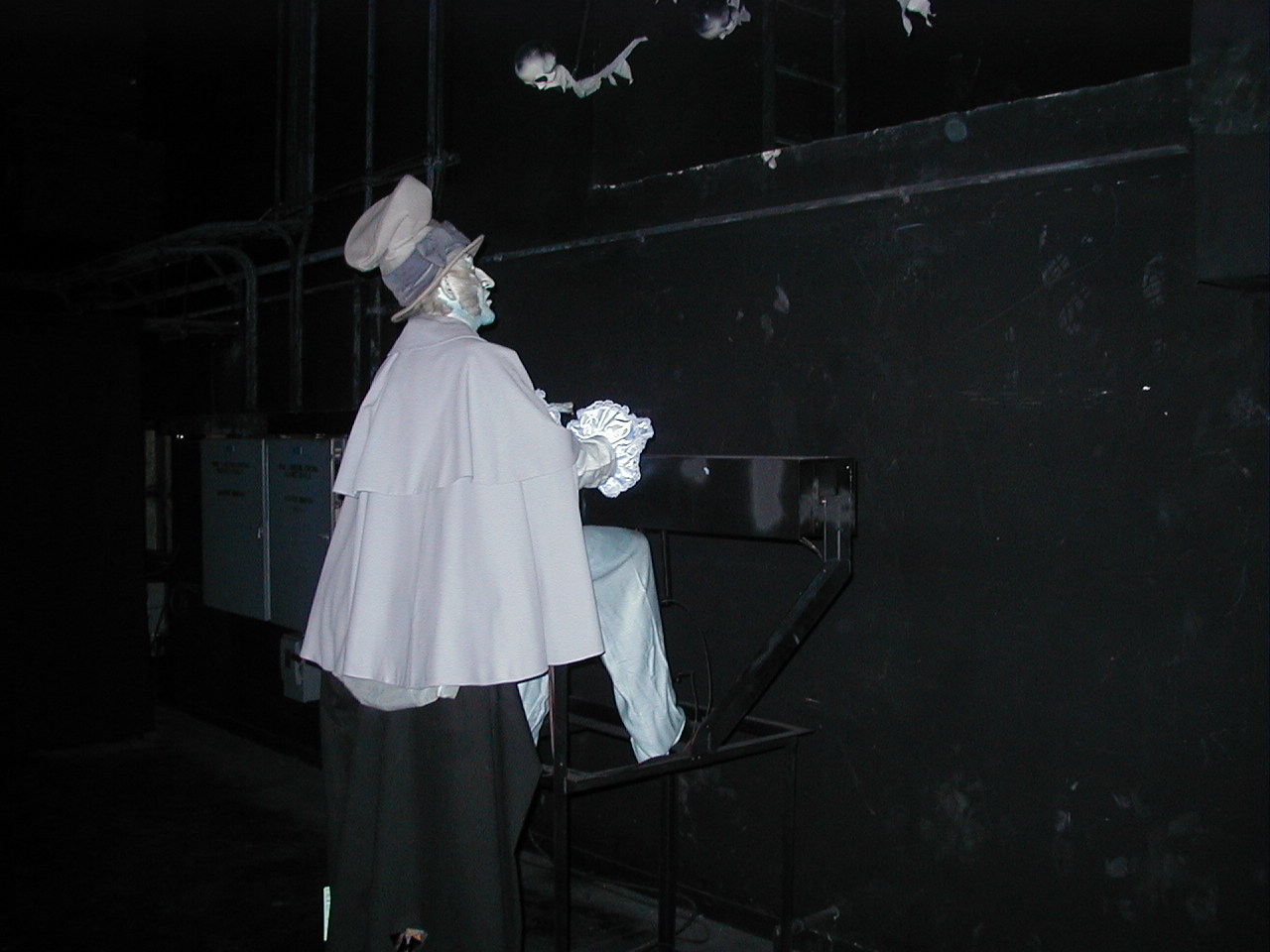


The video will
be projected on scrim stretched in front of the organ.
Pro’s:
·
Less Expensive – Scrim is
inexpensive compared to glass / Plexiglass and readily available in much larger
sizes. A projector and triggerable media
player should cost less than $200. Videoing
a live actor eliminates the cost of a body form and the cost of pneumatics to
animate the organist.
·
Ghostly – Projecting video on scrim
should preserve the ghostly nature of Pepper's illusion. The video image can be faded in and out to make
the organist gradually appear and disappear
·
Lifelike – The video will preserve
the lifelike movements of the actor videoed playing the organ.
·
Less Complex – Only the organ keys
will be animated, rather than the organist.
There’s far less maintenance with a solid-state projector and media
player.
We are considering
the use of AtmosFX
Hollusion Projection Material,
However, considerably
larger pieces of projection material are available from Carl’s Place,
We haven’t yet settled
on a projector. We are considering the AtmosFX HDDK
(Holiday Digital Decorating Kit),
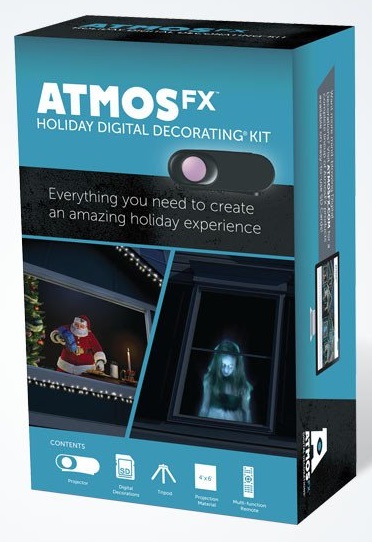
The HDDK
will reportedly have a HDMI input, is due out Summer 2017 and will retail for
$189.99. Obviously, far less expensive
projectors are available on eBay.
The TotalHomeFX WindowFX Projector Kit retails for $129.99 and
currently sells on Amazon.com for $30,
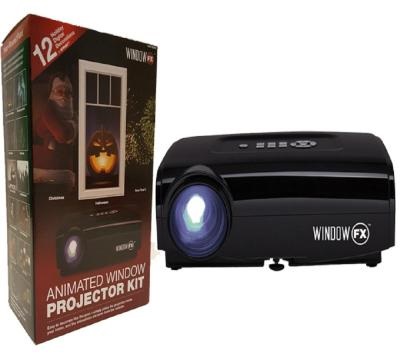
However, the WindowFX Projector Kit doesn’t have a video input.
Assuming the HDDK
doesn’t have a trigger input or serial communications, we will need a
triggering HD media player. We would use
the MedeaWiz Sprite* media player,
![]()
*
- Bill Kingsley at Team Kingsley LLC is offering the MedeaWiz
Sprite to HauntForum members for $69.00 (limit
4) until March 15, 2017.
Microcontroller
We tentatively plan to use a $3 Arduino Uno clone,
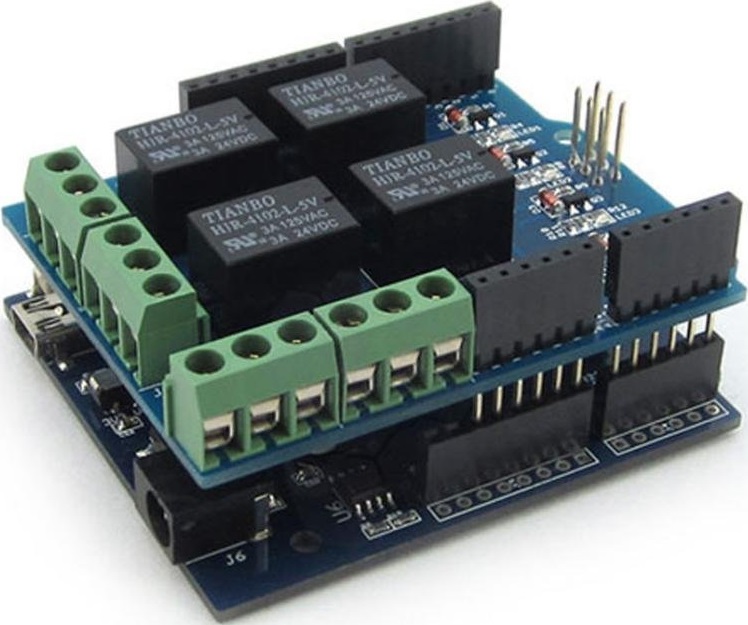
The Uno will control the media player / projector and animate / sync the organ keys via the solenoid valves / air cylinders.
